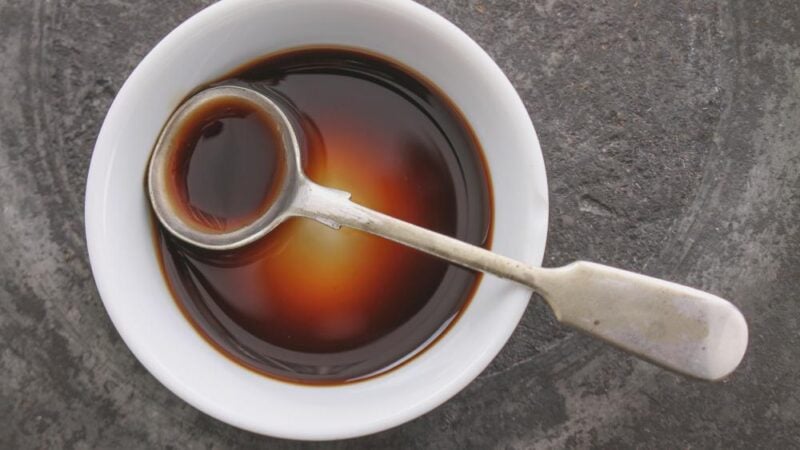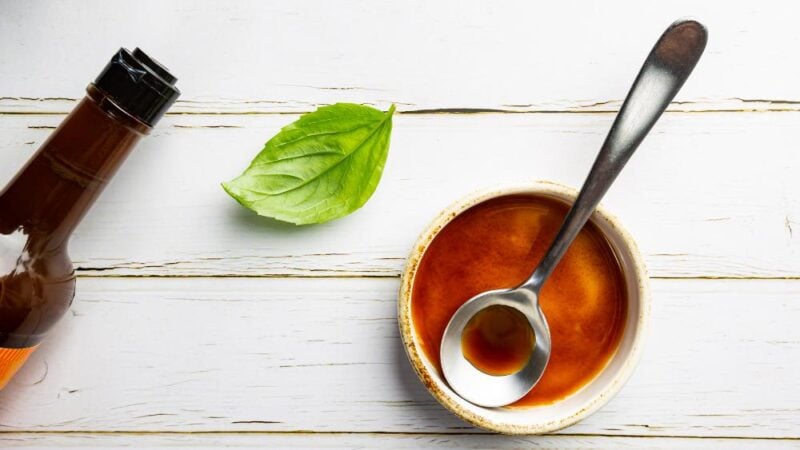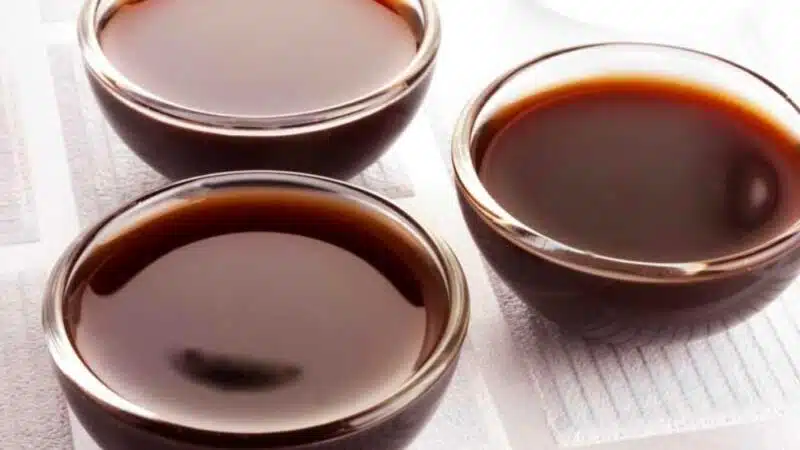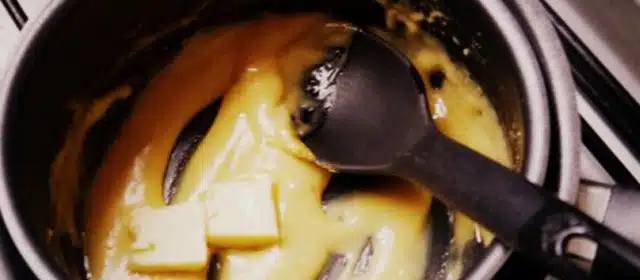Hello everyone, welcome to Paulina Cocina! The recipe we're going to cover today is the classic Worcestershire Sauce . On this page, you'll find everything you need to know to make it at home, with all the tips and attention to detail, as always.
You should know that today's recipe is so English that it says so in its name, so below we will look at its history, origin, and all the details of the Worcestershire sauce recipe .
Content table
About Worcestershire sauce
The sauce's composition includes key ingredients such as vinegar , which provides acidity and flavor; molasses, which contributes sweetness and depth; anchovies, which provide umami and saltiness; tamarind, which adds a fruity, acidic touch; and a blend of spices and seasonings, such as onion, garlic, cloves, and paprika, which add complexity and aroma.
These ingredients are blended and then undergo a fermentation and maturation process for several months, allowing the flavors to develop and blend.
Fermentation is an essential component in sauce making, as it contributes to the sauce's unique and profound flavor. This process enriches the flavors, creating a condiment that combines sweet, salty, sour, and umami flavors in perfect harmony.
Worcestershire sauce and its uses
The versatility of this sauce is impressive. It can be used as a seasoning for grilled meats, especially homemade steaks and burgers , to intensify their flavor and give them an appetizing shine. Other recipes using Worcestershire sauce include meat sauces, soups, stews, and even marinades like Steak Tartare .
Additionally, some cocktails, such as the Bloody Mary and the Caesar, benefit from a few drops of this sauce to enhance their umami flavor.
The history of Worcestershire sauce and a fortunate mistake
Also known as Worcestershire sauce, this sauce has a fascinating history dating back to the 19th century. It originated in Worcester, England, when chemists John Wheeley Lea and William Henry Perrins attempted to create a sauce to season meat dishes.
However, their first blend had such an unpleasant taste that they left it in their cellar. After a few years, they rediscovered the blend and were surprised to find it had matured into a complex and delicious sauce.
This sauce quickly became popular in England and, thanks to its unique flavor, was exported all over the world. The original recipe is a closely guarded secret, and each manufacturer has their own version, but this fortuitous invention gave rise to one of the most iconic and beloved condiments in global gastronomy.

What is the intriguing taste of Worcestershire sauce really like?
Its flavor is truly unique and distinctive. This sauce is known for its complex and balanced flavor profile that combines a variety of elements. Worcestershire sauce, also known as Worcestershire sauce , has an umami base that comes from ingredients like anchovies and tamarind.
This umami is combined with a touch of saltiness from the salt and soy sauce used in its preparation. In addition to the umami and saltiness, this sauce also offers a touch of sweetness from the molasses and a pleasant acidity from the vinegar and tamarind.
These elements are complemented by a series of spices and seasonings, such as onion, garlic, cloves, and paprika, which add depth and complexity to the flavor. The result is an amalgamation of flavors that include earthy, salty, sweet, and sour notes, with a subtle touch of spiciness that adds an additional nuance to the tasting experience.
The imitation of Worcestershire sauce
"Worcestershire sauce" is a term sometimes used to describe a condiment or sauce that resembles Worcestershire sauce in taste and use . However, it's important to note that this is not authentic Worcestershire sauce, but rather a variation or imitation made following a similar, but not necessarily identical, recipe.
The recipe for authentic Worcestershire sauce , as mentioned above, includes a mixture of ingredients such as vinegar, molasses, anchovies, tamarind, onions, garlic, spices, and other flavorings. The fermentation and maturation of these ingredients are crucial to developing its characteristic flavor.
In contrast, Worcestershire sauces can vary in ingredients and proportions, resulting in a slightly different flavor. They typically include basic ingredients such as vinegar, molasses, soy sauce, onion, garlic, and spices, but may omit specific ingredients or add other elements to achieve a unique flavor.
How to differentiate Worcestershire sauce from soy sauce
Worcestershire sauce and soy sauce are two popular condiments that are often confused due to their appearance and common use in cooking. However, there are significant differences in terms of ingredients, flavor, and origin.
- The main difference lies in their base ingredients. Soy sauce, also known as soy sauce, is made primarily from fermented soybeans and wheat, while Worcestershire sauce has a more complex composition that includes vinegar, molasses, anchovies, tamarind, onions, garlic, and a variety of spices and seasonings.
- Another key difference is geographical origin. Soy sauce has its roots in Asian cuisine, particularly in China and Japan, where it has been used for centuries. Worcestershire sauce, originated in England in the 19th century and has become iconic in Western cuisine.
Follow on Instagram ( here )
and on YouTube that I upload new videos every week ( click here )
Worcestershire sauce recipe
Yield : 1 cup of sauce
Preparation time : 30 minutes
Ingredients
- 1 cup white wine vinegar
- 1/4 cup of soy sauce
- 1/4 cup molasses
- 2 tablespoons of brown sugar
- 1 tablespoon of lemon juice
- 1 teaspoon of sweet paprika
- 1/2 teaspoon of mustard powder
- 1/2 teaspoon of garlic powder
- 1/2 teaspoon of onion powder
- 1/4 teaspoon of black pepper
- 1/4 teaspoon chili powder
Original Worcestershire sauce in 3 steps
- In a saucepan, combine all ingredients over medium heat. Bring to a boil, stirring constantly.
- Once boiling, reduce heat to low and cook for 10-15 minutes.
- Remove the sauce from the heat and let it cool before straining it to remove any solids.






